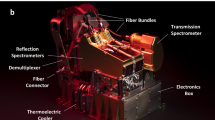Abstract
There are two guiding modes of the Hubble Space Telescope used for the acquisition of astronomical data by one of its six scientific instruments. The nominally more precise one is called Fine Lock and the other is known as Coarse Track. Two of the three Fine Guidance Sensors are locked onto Guide Stars, in one of these two modes, thus maintaining the spacecraft's line of sight to a few milli-arc seconds (nominally 7 milli-arc seconds for Fine Lock and 17 milli-arc seconds for Coarse Track). In this paper I report on the most realistic and extensive simulations to date of the Coarse Track guidance mode. These simulations clearly show that the precision of Coarse Track is influenced by one adjustable parameter and that for default operating conditions its precision is 12 milli-arc seconds. A factor of two improvement should be possible by modifying the key parameter which governs the precision of Coarse Track. The importance of this for the scientific mission on the Hubble Space Telescope is that the use of Coarse Track in place of Fine Lock will result in a ∼1/3 reduction of engineering overhead per scientific target acquisition.
Similar content being viewed by others
Author information
Authors and Affiliations
Additional information
See text for a full explanation.
Rights and permissions
About this article
Cite this article
Taff, L.G. An analysis of the Hubble Space Telescope Fine Guidance Sensor Coarse Track mode. Exp Astron 1, 237–266 (1990). https://doi.org/10.1007/BF00428518
Received:
Accepted:
Issue Date:
DOI: https://doi.org/10.1007/BF00428518




